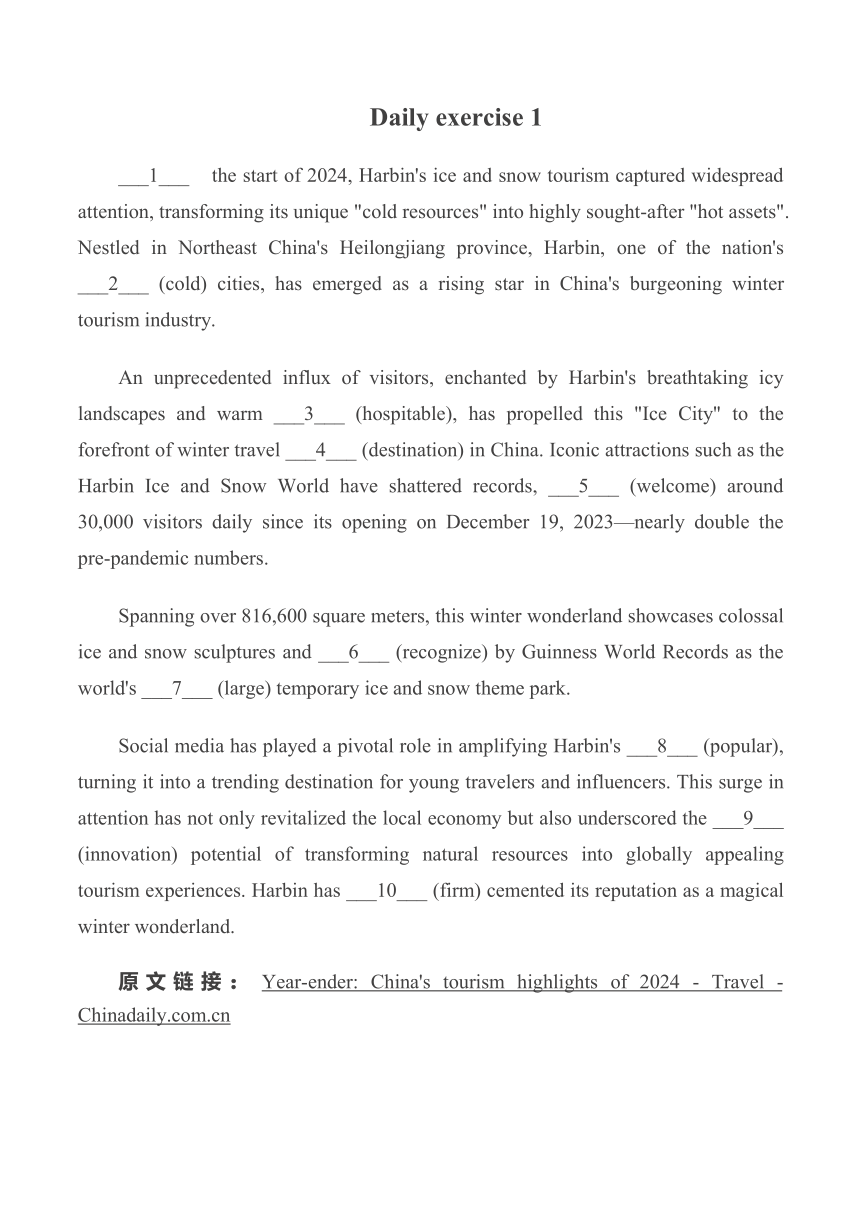
Daily exercise 1 ___1___ the start of 2024, Harbin's ice and snow tourism captured widespread attention, transforming its unique "cold resources" into highly sought-after "hot assets". Nestled in Northeast China's Heilongjiang province, Harbin, one of the nation's ___2___ (cold) cities, has emerged as a rising star in China's burgeoning winter tourism industry. An unprecedented influx of visitors, enchanted by Harbin's breathtaking icy landscapes and warm ___3___ (hospitable), has propelled this "Ice City" to the forefront of winter travel ___4___ (destination) in China. Iconic attractions such as the Harbin Ice and Snow World have shattered records, ___5___ (welcome) around 30,000 visitors daily since its opening on December 19, 2023—nearly double the pre-pandemic numbers. Spanning over 816,600 square meters, this winter wonderland showcases colossal ice and snow sculptures and ___6___ (recognize) by Guinness World Records as the world's ___7___ (large) temporary ice and snow theme park. Social media has played a pivotal role in amplifying Harbin's ___8___ (popular), turning it into a trending destination for young travelers and influencers. This surge in attention has not only revitalized the local economy but also underscored the ___9___ (innovation) potential of transforming natural resources into globally appealing tourism experiences. Harbin has ___10___ (firm) cemented its reputation as a magical winter wonderland. 原文链接:Year-ender: China's tourism highlights of 2024 - Travel - Chinadaily. Daily exercise 2 China has been ___1___ (continuous) optimizing its visa-free and visa-on-arrival policies ___2___ facilitate foreign travel to the country. Over the past year, significant strides ___3___ (make) to expand the range of eligible countries, extend stay durations, and ___4___ (broad) activity areas for foreign visitors. These efforts include unilateral visa exemptions, mutual visa waivers, regional visa-free entry, and transit visa-free policies, with a focus on key breakthroughs and complementary strategies. As of now, China has established comprehensive visa-free ___5___ (agree) with 26 countries, unilaterally granted visa-free entry ___6___ 38 nations, implemented transit visa-free policies for 54 countries, and signed mutual visa waiver agreements covering various passport types with 157 countries and regions. This series ___7___ relaxed visa measures has injected new momentum into the growth of China's inbound tourism. In the first 11 months of this year, 29.22 million foreign visitors entered China through its ports, a year-on-year increase of 86.2 percent. Among them, 17.45 million entered under visa-free policies, up by 123.3 percent. ___8___ (notable), the 72/144-hour transit visa-free policies have gained widespread popularity both domestically and internationally, with a 132.9 percent year-on-year increase in ___9___ (use). International discussions, such as the trending "Friday after work, off to China" and "City not City" h ... ...
~~ 您好,已阅读到文档的结尾了 ~~

